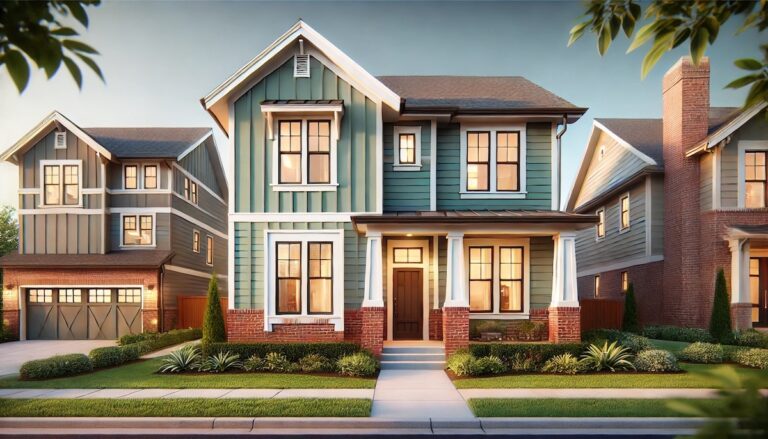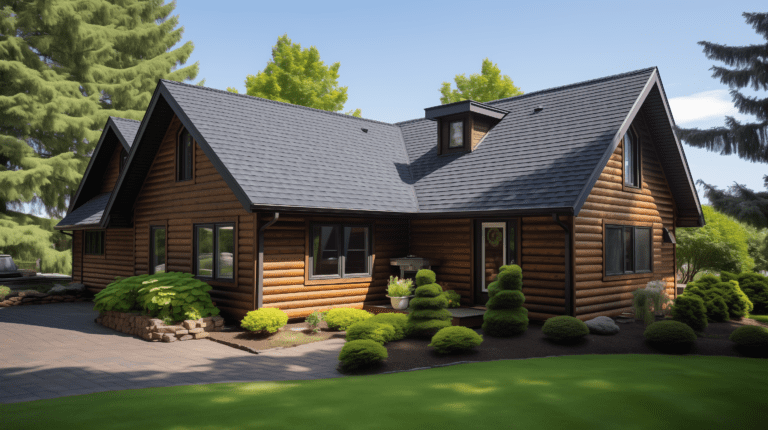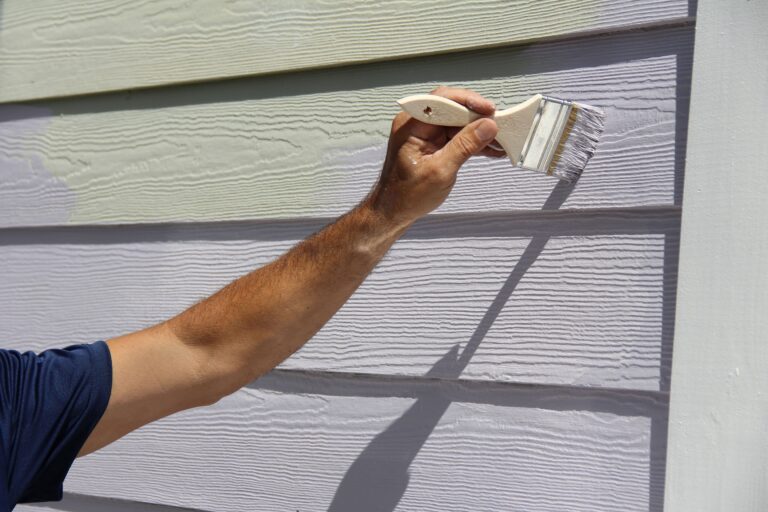- There are a variety of siding options to choose from when choosing an exterior house color. Vinyl can be an affordable option for most homes that come in a lot of different color trends.
- Choosing the right vinyl house siding color is crucial as it impacts a home’s aesthetic appeal, value, and energy efficiency.
- Considerations when choosing siding color include the home’s architectural style, climate, your desired trim colors, and neighborhood trends.
- Popular house siding colors range from classic neutrals to vibrant hues and dark tones, with online tools and professional consultations aiding in visualizing outcomes.
SECTION TAKEAWAY
- The selection of vinyl siding color is crucial for enhancing a home’s aesthetic appeal and value, impacting energy efficiency and playing a major role in maintaining its aesthetic integrity over time.
Choosing the right color for your home’s vinyl siding is an important decision that can greatly impact its overall aesthetics and value. In this comprehensive guide, we will explore the role of vinyl house siding color and see if this siding option is right when enhancing a home’s appearance and discuss the various factors you should consider when selecting a color. We will also provide insights into popular vinyl siding colors and their implications. Additionally, we will share tips for visualizing your home with different siding colors, siding options, and color trends to offer advice on how to maintain the color of your vinyl siding over time. By the end, you will be equipped with the knowledge and inspiration to confidently choose the perfect vinyl siding color for your home.
Understanding the Importance of Vinyl Siding Color
When it comes to home exteriors, vinyl siding plays a crucial role in not only protecting the structure but also contributing to its overall aesthetic appeal. The color of vinyl siding alongside trim colors can transform a house from blending in with its surroundings to standing out as a stunning focal point.
Furthermore, the right vinyl siding color can have a significant impact on the value of your home, enhancing its curb appeal and desirability among potential buyers. Understanding the importance of vinyl siding color is the first step towards making an informed decision.
The Role of Vinyl Siding in Home Aesthetics
Vinyl siding is like a canvas that allows you to paint your home in any color you desire. The right color can accentuate desirable architectural features and create a cohesive and appealing look. Whether you want your home to exude a traditional charm or a modern flair, the choice of vinyl siding color can bring your vision to life.
Consider the architectural style of your home and also the trim colors to select a color that complements its design elements. A classic Victorian-style house may benefit from softer, traditional colors, while a sleek and contemporary home might call for more vibrant and bold hues.
Additionally, the texture and finish of the vinyl siding can further enhance the visual impact of the color. Some vinyl sidings have a smooth finish, while others have a textured surface that adds depth and dimension to the color. By choosing the right combination of color and texture, you can create a visually stunning exterior that sets your home apart from the rest.
How Vinyl Siding Color Affects Home Value
Believe it or not, the color of your vinyl siding can impact the value of your home. A well-chosen color can enhance the overall attractiveness of your property, making it more appealing to potential buyers. Vibrant colors may create a lasting impression and give your home a unique character, while neutral tones can provide a timeless and versatile appeal.
When selecting a vinyl siding color, consider the preferences and trends in your neighborhood. While you want your home to stand out, it’s essential to ensure that the color choice aligns with the surrounding houses and does not violate any homeowner association restrictions.
Furthermore, the color of your vinyl siding can also affect the energy efficiency of your home. Darker colors tend to absorb more heat from the sun, which can increase the temperature inside your home during hot summer months. On the other hand, lighter colors reflect more sunlight, helping to keep your home cooler and reducing the need for excessive air conditioning.
Another factor to consider is the geographical location of your home. If you live in an area with intense sunlight, choosing a lighter color for your vinyl siding can help prevent fading and discoloration over time. Conversely, if you reside in a region with a colder climate, darker colors can help absorb more heat and contribute to better insulation.
In conclusion, the color of your vinyl siding is not just a matter of personal preference or aesthetics. It can significantly impact the overall look, value, and energy efficiency of your home. By carefully considering the architectural style, neighborhood trends, trim colors, and climate factors, you can make an informed decision that will enhance the beauty and functionality of your home for years to come.
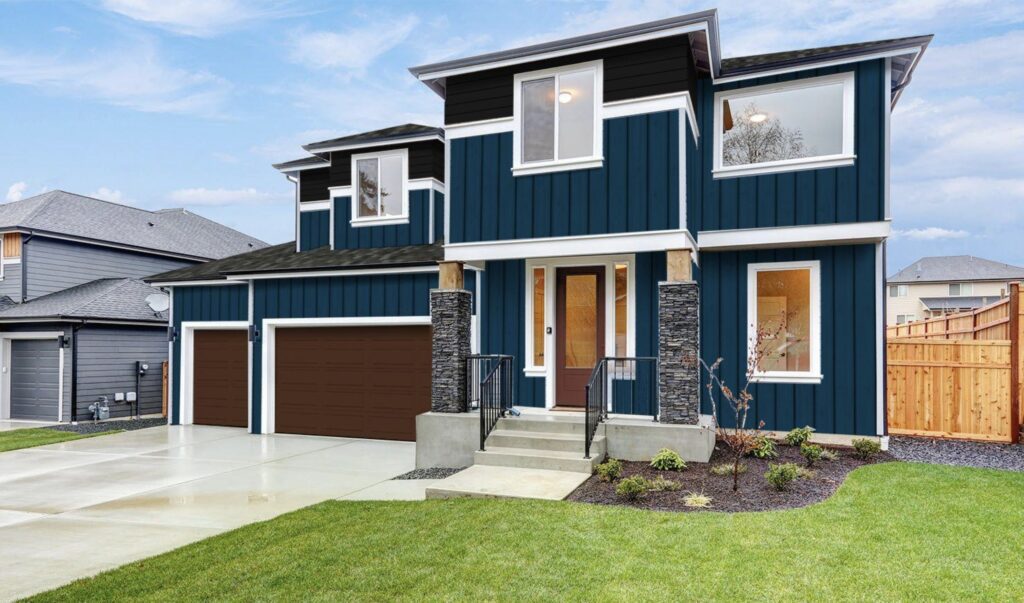
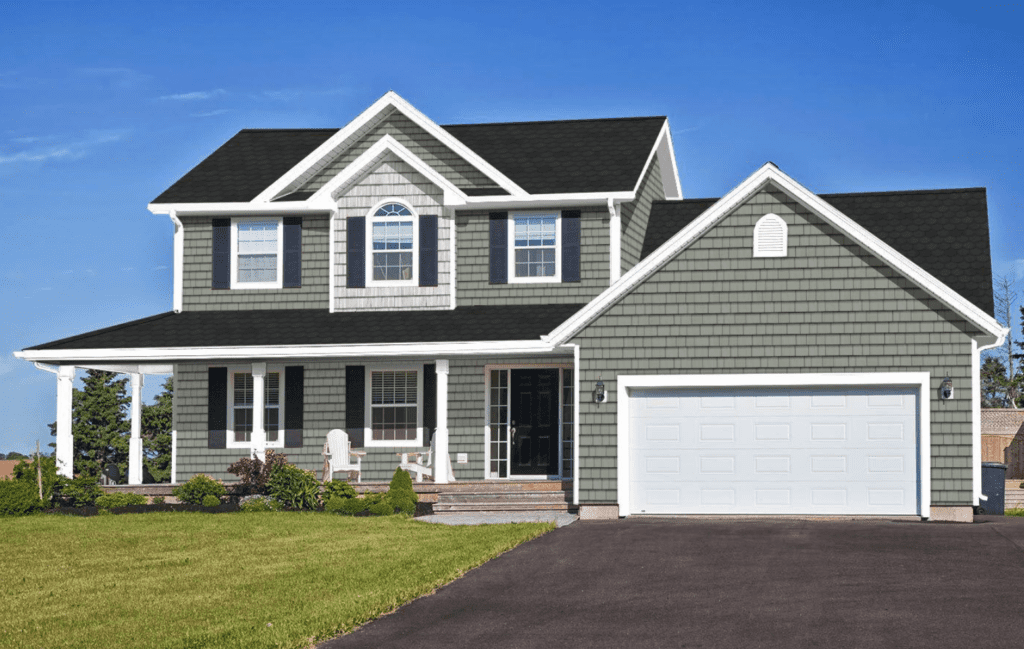
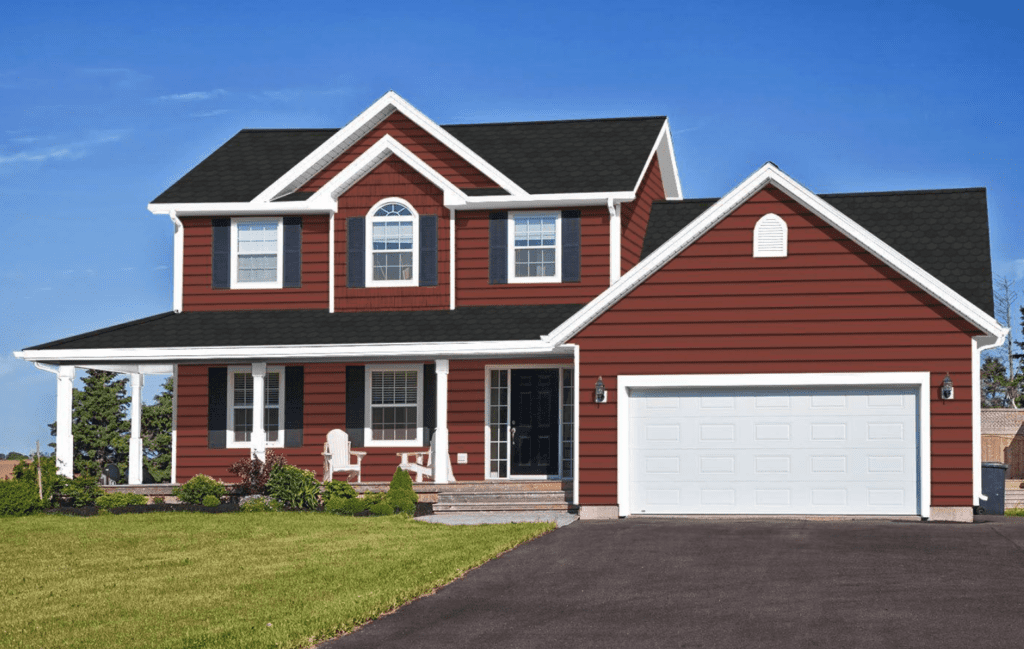
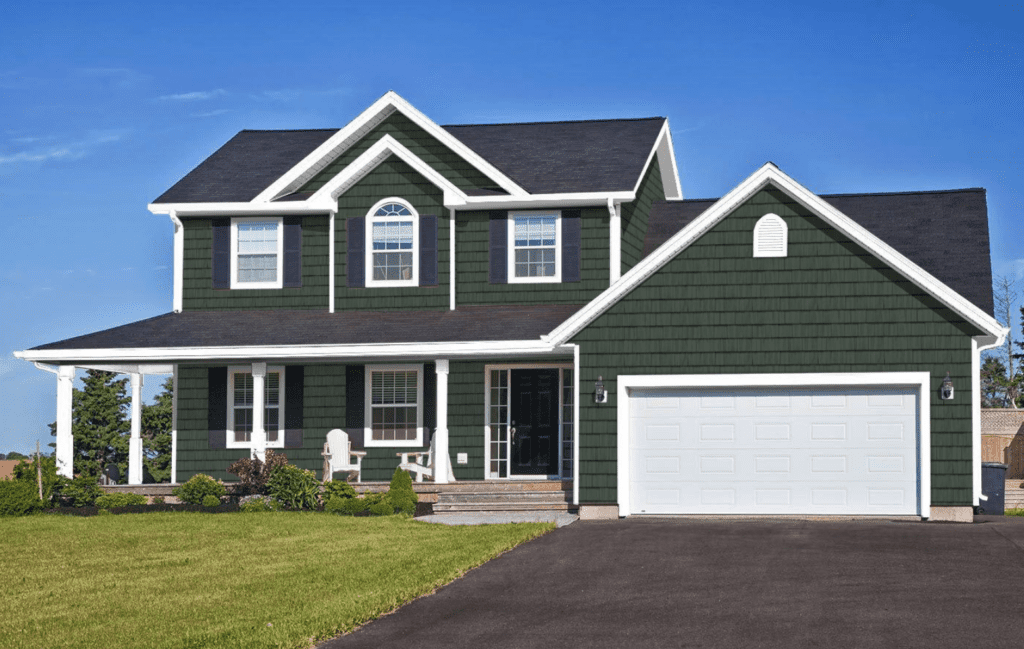
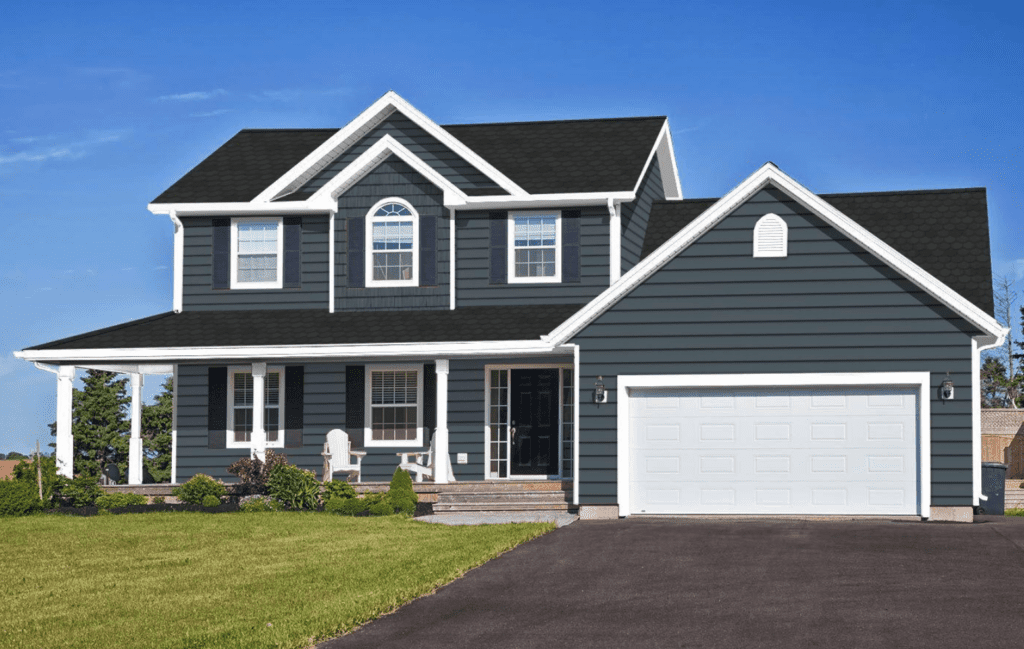
SIDING VISUALIZER TOOL
Design A Home In 5 Minutes
Help your homeowners visualize new siding and colors on their own home with Renoworks’ AI technology in seconds.
- Easy-to-use interface designed for contractors and professionals working with homeowners.
SECTION TAKEAWAY
- When choosing a vinyl siding color, it’s crucial to consider the architectural style of your home, the climate and environment around your home, and any neighborhood trends or restrictions, as these factors significantly influence the overall look, value, and harmony of your property.
Factors to Consider When Choosing Vinyl Siding Color
Now that we understand the importance of vinyl siding color, let’s delve into the key factors you should consider when making your selection.
Choosing the right color for your vinyl siding can greatly enhance the overall appearance of your home. It is an opportunity to express your personal style and make a statement. However, with so many options available, it can be overwhelming to make a decision. That’s why it’s important to consider various factors before settling on a color.
The Architectural Style of Your Home
First and foremost, consider the architectural style of your home. Different architectural styles lend themselves better to certain color palettes than others. For example, a coastal cottage may look stunning in pastel shades, while a rustic cabin may benefit from earthy tones.
Research and gather inspiration from homes with similar architectural styles to see which colors work best. This will help you narrow down your options and ensure you make a harmonious choice.
Additionally, think about the overall aesthetic you want to achieve. Do you want your home to blend in with the surroundings or stand out? Consider whether you prefer a more traditional look or a modern and bold appearance.
The Climate and Environment Around Your Home
The climate and environment in which your home is located should also guide your choice of vinyl siding color. Consider the dominant colors in your surroundings, such as the natural landscape, neighboring houses, and even the weather patterns.
In warmer climates, lighter shades can help reflect heat and keep your home cooler. Lighter colors also tend to fade less over time. In colder climates, darker colors may absorb heat and contribute to energy efficiency. Additionally, take into account factors like sun exposure and how sunlight may affect the color over time.
Furthermore, think about the mood you want to create with your vinyl siding color. Do you want your home to feel warm and inviting or cool and calming? The color you choose can greatly influence the overall atmosphere of your home.
Neighborhood Trends and Restrictions
While you want to select a vinyl siding color that suits your personal taste, it’s also important to consider neighborhood trends and any restrictions that may apply. Keeping in line with the overall aesthetic of your community can help maintain a cohesive and visually pleasing neighborhood.
Take a look around your neighborhood and see what colors and trim colors are commonly used. For example, your neighbourhood might favour gray siding, blue siding, white trim, or a variety of other siding and trim combinations. This can give you an idea of what works well in the area and what colors to avoid. However, don’t be afraid to add your own touch and stand out if that’s what you desire.
If you reside in a neighborhood with homeowner association guidelines, ensure that the siding and trim color you choose complies with their regulations. This will prevent any future headaches or potential fines. It’s always a good idea to consult with your homeowner association or local authorities before making a final decision on siding and trim colors.
Remember, choosing the right siding and trim vinyl siding color is an investment in the overall look and value of your home. Take your time, do your research, and consider these factors to make an informed decision that you’ll be happy with for years to come.
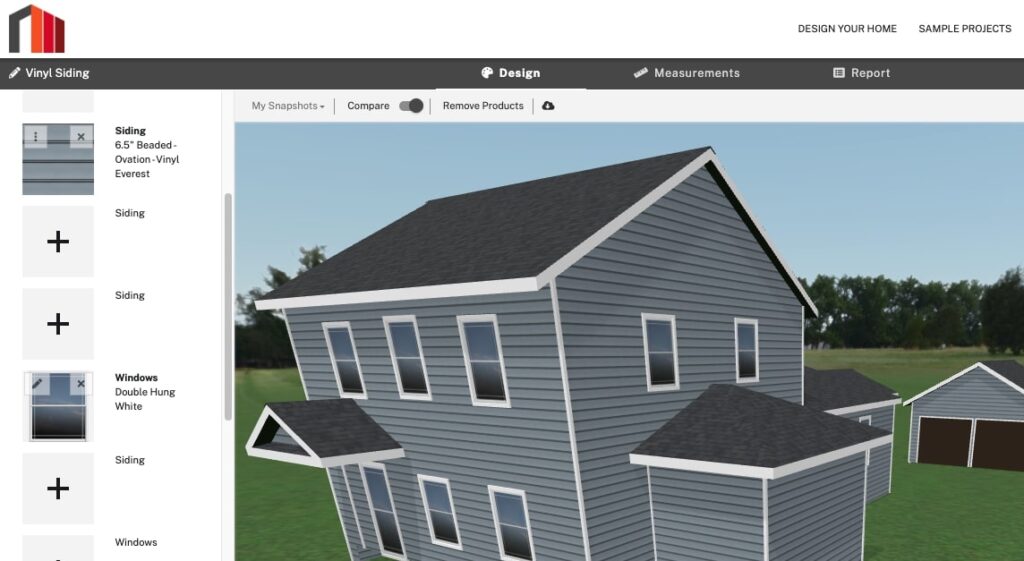




SIDING VISUALIZER TOOL
Design A Home In 5 Minutes
Help your homeowners visualize new siding and colors on their own home with Renoworks’ AI technology in seconds.
- Easy-to-use interface designed for contractors and professionals working with homeowners.
SECTION TAKEAWAY
- Popular vinyl siding colors range from classic white and neutral tones, which offer a timeless and versatile appeal, to bold and vibrant colors that allow homeowners to make a statement, to dark and earthy tones that provide a rich and sophisticated look, with each color choice bearing unique implications for the home’s aesthetic, maintenance, and energy efficiency.
Popular Vinyl Siding Colors and Their Implications
Now that you have a clearer understanding of the key factors to consider, let’s explore some popular vinyl siding colors and examine their implications.
Classic White and Neutral Tones
White and neutral tones continue to be a timeless choice for vinyl siding and trim. White and neutral tones are typically used as trim colors as well. Classic and versatile, these colors can complement a variety of architectural styles and blend seamlessly in any neighborhood.
White siding and trim can create a fresh and clean look, making a home appear larger and more inviting. Neutral tones, such as beige or gray siding, offer a modern and sophisticated appeal.
Bold and Vibrant Colors
If you want your home to make a bold statement, consider vibrant colors for your vinyl siding . Deep reds, blues, or greens can add personality and create a memorable first impression. However, keep in mind that these colors may be part of a short-lived color trend as well. If you are looking for longevity, make sure to avoid siding and trim combinations that might be color trends.
When opting for bold colors, it’s crucial to ensure they complement the other elements of your home’s exterior, such as the roof, windows, and landscaping. The right combination can result in a striking and visually pleasing home.
Dark and Earthy Tones
For a rich and sophisticated look, consider dark and earthy tones for your vinyl siding. Colors like deep brown, charcoal gray, or forest green can create a sense of depth and warmth. These can also serve as interesting trim colors when used properly. These darker, more neutral colors can serve as powerful accent colors if used correctly.
Dark colors can also help your home stand out in a landscape dominated by light-colored houses. However, be mindful that darker hues may absorb more heat, which can impact the energy efficiency of your home. If you do like the idea of dark colors – it might be worth considering using them as an accent color, or roof color instead of a siding and trim color.
SECTION TAKEAWAY
- Insulated vinyl siding provides energy efficiency benefits by helping to regulate indoor temperatures and reduce heating and cooling costs, while also offering aesthetic appeal and customization options for homeowners
Tips for Visualizing Your Home with Different Vinyl Siding Colors
Picturing how your home will look with a particular vinyl siding color can be challenging. Consider the current trim colors or accent colors in your current build as well. Fortunately, there are some helpful tools and techniques to assist you in visualizing the final result.
Using Online Visualization Tools
Take advantage of online visualization tools specifically designed for choosing exterior colors. These tools often allow you to upload a photo of your home and experiment with different siding colors, accent colors, or roof colors virtually. This can give you a realistic idea of how various colors will look on your home.
Remember that the appearance of colors may vary based on lighting conditions, so try to experiment with the visualization tool at different times of the day to get a comprehensive understanding of what your exterior house color and accent colors look like in different lighting settings.
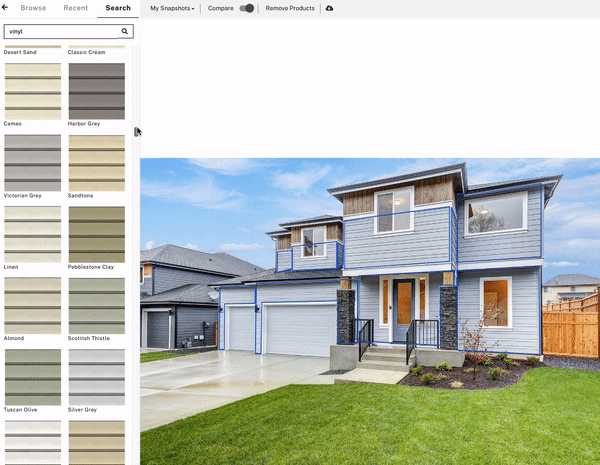
Consulting with Design Professionals
If you’re still unsure about the best vinyl siding color and accent colors for your home, consider consulting with design professionals or color specialists. These experts can provide tailored advice based on your home’s unique characteristics, your preferences, and the overall goals you want to achieve.
Design professionals can also provide additional insights into complementary colors for your trim colors, shutters, and front door, helping you create a cohesive and harmonious color scheme that enhances your home’s overall curb appeal.
SECTION TAKEAWAY
- Maintaining the vibrancy of your vinyl siding color requires regular cleaning with gentle methods and occasional professional power washing, while considering a color change, driven by personal taste or a desire to update your home’s appearance, should be done adhering to manufacturer’s guidelines for the best results.
Maintaining Your Vinyl Siding Color Over Time
Once you have chosen the perfect vinyl siding color for your home, it’s important to understand how to maintain its vibrancy and appearance over time.
Cleaning and Care Tips
Regular cleaning is essential to keep your vinyl siding looking its best. Use a mild detergent and a soft-bristle brush to remove dirt, grime, and any other buildup. Avoid using abrasive materials or harsh chemicals, as they can damage the siding and affect the color.
Additionally, consider scheduling professional power washing every few years to deep clean your siding and restore its original luster.
When to Consider a Color Change
Over time, you may find yourself wanting to refresh the look of your home by changing the vinyl siding color or trim colors of your home. Perhaps your taste has evolved, or you’re simply tired of looking at the same white trim, blue siding, or neutral colors that everyone else in your neighbourhood has.
If you decide to change the color, make sure to follow proper prep and application techniques recommended by the manufacturer. Properly removing the existing siding color and applying the new one correctly will ensure a seamless and long-lasting result.
Conclusion
Choosing the perfect vinyl siding color for your home is an exciting yet critical decision. By understanding the role of vinyl siding color and trim colors in home aesthetics and considering factors such as architectural style, climate, and neighborhood restrictions, you can make an informed choice that enhances your home’s overall appeal and value.
Explore popular vinyl siding colors, experiment with visualization tools, and consult with design professionals to visualize different options and gain expert insights. Finally, maintain your vinyl siding color by following proper cleaning and care tips and consider a color change in the future if desired.
With this ultimate guide, you are now empowered to transform your home with the perfect vinyl siding color, creating a beautiful and welcoming exterior that reflects your unique style and personality.




SIDING VISUALIZER TOOL
Design A Home In 5 Minutes
Help your homeowners visualize new siding and colors on their own home with Renoworks’ AI technology in seconds.
- Easy-to-use interface designed for contractors and professionals working with homeowners.
Related Articles
Continue exploring this topic with these related articles, or read one of our case studies to see how visualization has helped remodelers save time and increase their profits.


